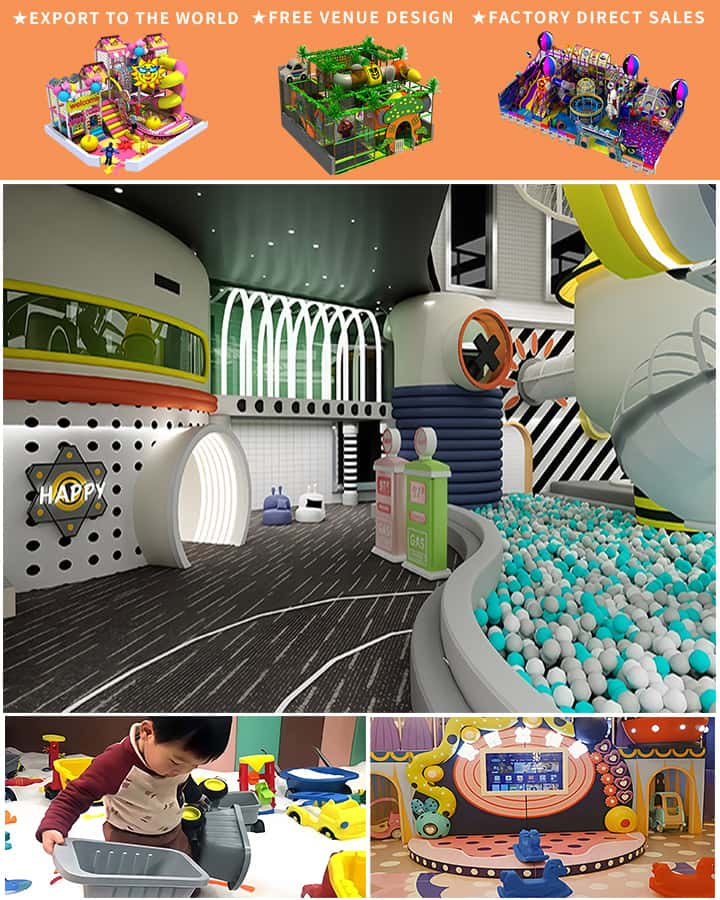Playground equipment has long been a staple in communities, parks, schools, and daycare centers worldwide. Over time, the design and functionality of these play structures have evolved significantly, reflecting advancements in safety standards, child development research, and material technology. This article delves into the journey of playground equipment from its rudimentary beginnings to the sophisticated installations we see today, highlighting its crucial role in promoting physical activity and social interaction among children.
The Origins of Playground Equipment
The concept of dedicated play spaces for children can be traced back to the late 19th century. Initially, playgrounds were simple affairs—often just open fields or sandlots where children could engage in unstructured play. The first recorded instance of playground equipment was in Boston’s Franklin Park in 1885, featuring basic swings, slides, and seesaws. These early pieces were often makeshift and lacked the safety features we consider essential today.
The 20th Century Boom
The mid-20th century saw a significant expansion in public playgrounds, driven largely by post-World War II economic prosperity and a growing recognition of the importance of recreation in urban planning. In 1936, the Works Progress Administration (WPA) built numerous playgrounds across the United States as part of President Franklin D. Roosevelt’s New Deal. These playgrounds featured more advanced equipment, such as monkey bars, merry-go-rounds, and climbing structures.
During this period, the design of playground equipment began to reflect emerging theories in child development. Experts argued that playgrounds should cater to various age groups and abilities, fostering physical fitness, creativity, and social skills. This led to the creation of specialized zones within larger playground areas, each equipped with age-appropriate activities.

Modern Playground Equipment: Safety and Innovation
By the late 20th century, safety concerns had become paramount in playground design. The tragic accidents involving faulty or unsafe equipment prompted stricter regulations and testing standards. Organizations such as the American Society for Testing and Materials (ASTM) and the U.S. Consumer Product Safety Commission (CPSC) established guidelines to ensure that playground equipment met rigorous safety criteria.
Today’s playground equipment is a far cry from its early predecessors. Modern designs incorporate advanced materials like high-density polyethylene and recycled plastics, which are not only durable but also safer and more environmentally friendly. Innovations include inclusive play structures designed to accommodate children with disabilities, sensory-rich environments that stimulate various developmental aspects, and interactive digital elements that blend physical activity with technology.
The Role of Playground Equipment in Child Development
Playground equipment plays a crucial role in the holistic development of children. Physically, it promotes gross motor skills, coordination, balance, and strength. Activities like climbing, swinging, and sliding enhance muscle tone and flexibility while improving cardiovascular health.
Socially, playgrounds serve as communal spaces where children learn to interact, share, negotiate, and collaborate. They develop communication skills and form friendships, essential components of emotional intelligence. Moreover, imaginative play structures such as castles and pirate ships encourage creative thinking and problem-solving, fostering cognitive development.
Future Trends in Playground Equipment
As society continues to evolve, so too will the playground equipment of tomorrow. Future trends may include even more personalized play experiences, thanks to advancements in smart technology and data analytics. We might see playgrounds equipped with sensor-based games that adapt to a child’s movements or virtual reality setups that create immersive play scenarios.
Additionally, sustainability will likely remain a key focus area. Eco-friendly materials, solar-powered lighting, and natural play elements like logs and boulders will become increasingly common. These features not only minimize environmental impact but also connect children more deeply with nature.
Conclusion
From humble beginnings to cutting-edge innovations, playground equipment has undergone remarkable transformations over the years. It now stands as a testament to our understanding of child development and our commitment to creating safe, engaging environments for young minds and bodies. As we look to the future, continued advancements promise even richer, more inclusive play experiences for generations to come.




